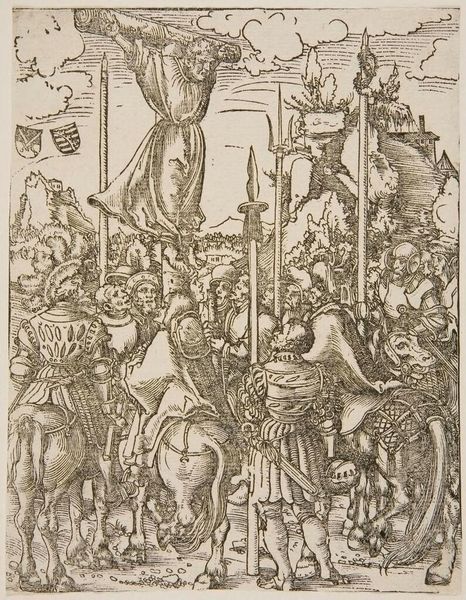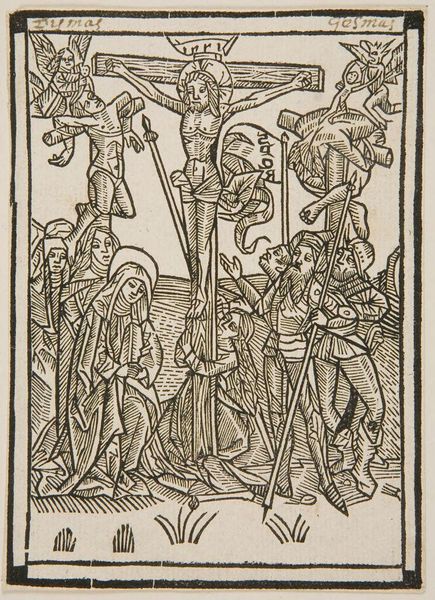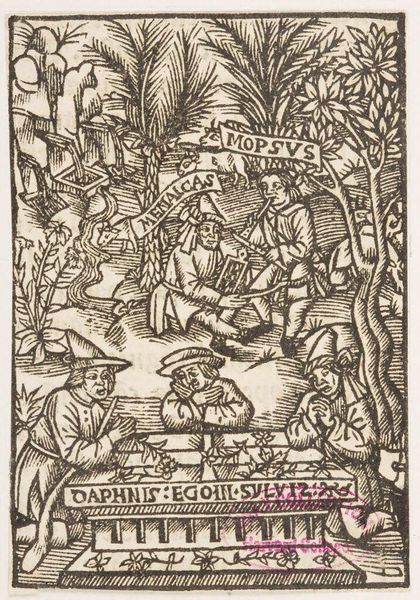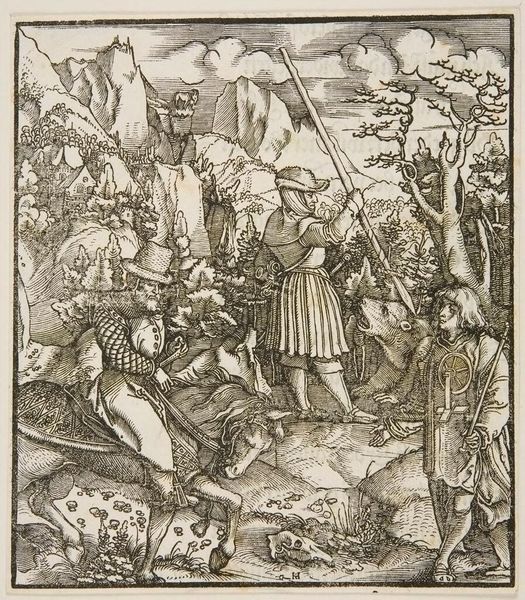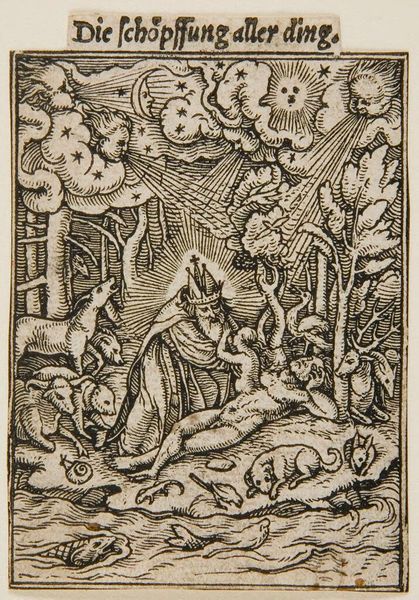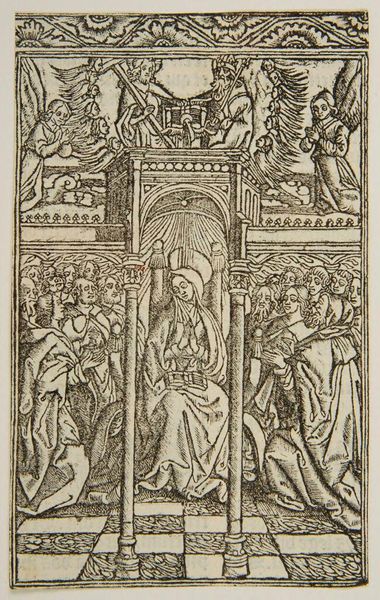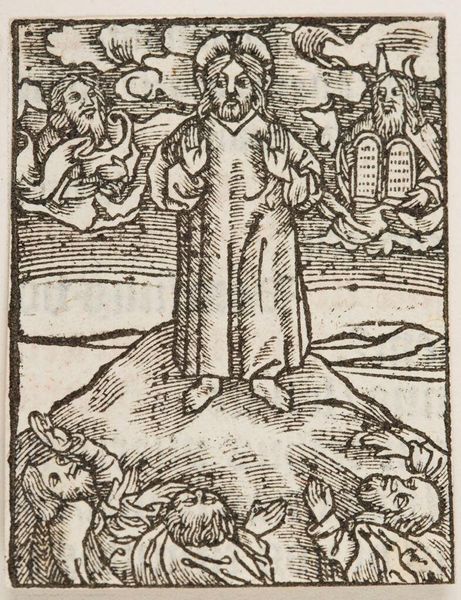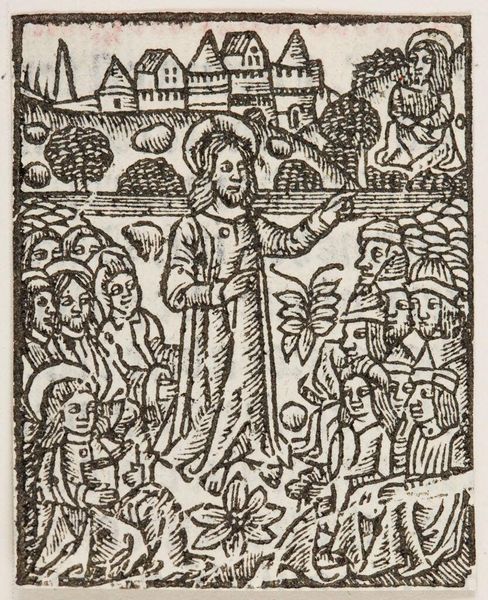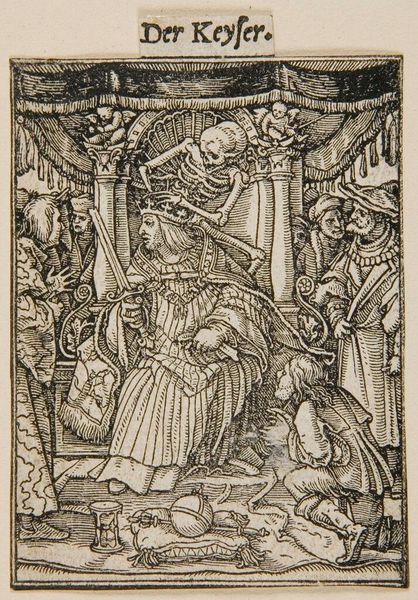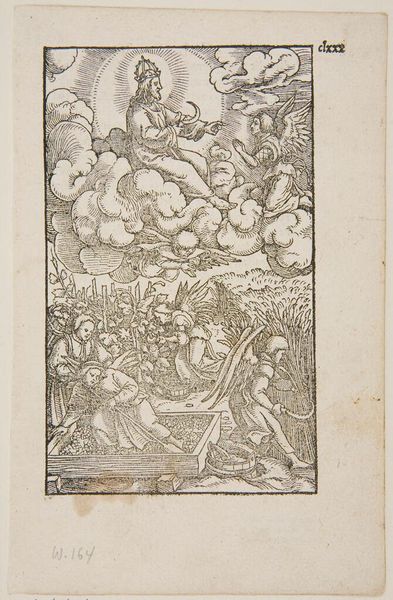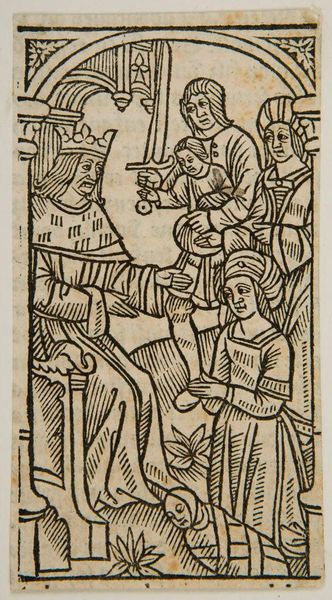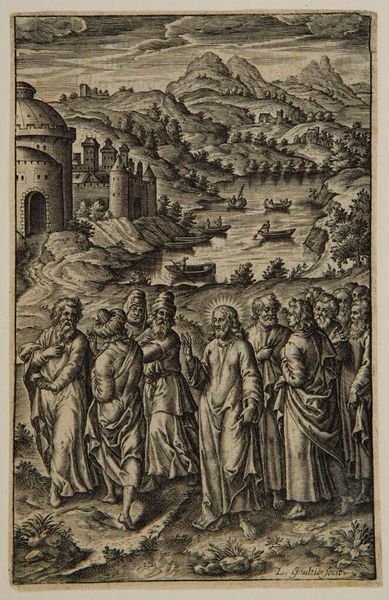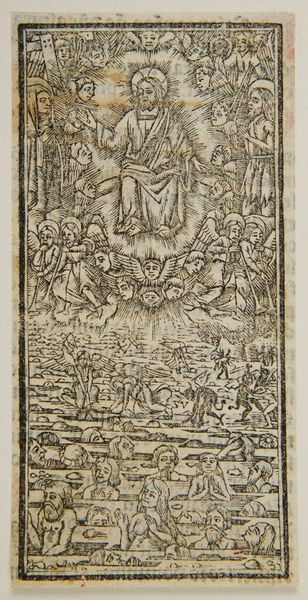
Copyright: CC0 1.0
Editor: This anonymous woodcut, simply titled "Last Judgement," depicts a chaotic scene. The contrast between the serene figures above and the turmoil below is striking. What do you make of the symbolism here? Curator: The imagery speaks volumes. Notice the scales of justice and the trumpeting angels. They’re not mere decoration; they evoke a deeply rooted cultural anxiety about divine retribution and a yearning for moral order. What emotions do these stark contrasts stir in you? Editor: Definitely a sense of unease, but also fascination. It's a powerful reminder of how visual symbols can shape our understanding of abstract concepts. Curator: Precisely. Visual traditions and archetypes, passed down through generations, continue to exert influence. Considering the historical context, it underscores how artists once used readily accessible symbolism to convey complex theological ideas. Editor: So, it’s less about individual interpretation and more about shared cultural memory? Curator: Not necessarily. It’s a blend. The artist drew upon a shared visual vocabulary, but their individual touch, the specific composition, and the level of detail also contribute to the artwork's unique impact. Editor: I hadn't thought of it that way. Thanks, this was really helpful. Curator: My pleasure. It’s a testament to art’s enduring power to provoke thought and emotion across time.
Comments
No comments
Be the first to comment and join the conversation on the ultimate creative platform.
